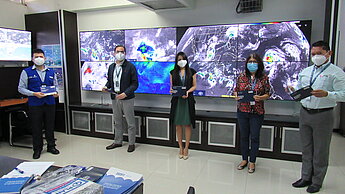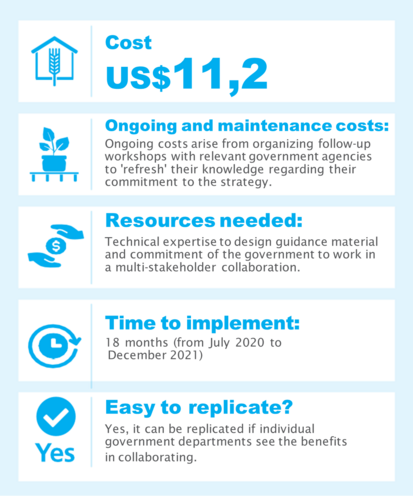What was the problem?
In El Salvador, Disaster Risk Management (DRM) plans and policies predominantly focus on post- event recovery, while preparedness is insufficiently incorporated into those plans and policies. Furthermore, gaps in interacting responsibilities complicate collaboration between different government departments operating at the national level, often detached from the reality on the ground. Forecasts about the risk of imminent flood events, prepared by the Observatory under the Ministry, are either not easily accessible for local communities, or the information that reaches them is too technical to be easily understood. As a result, communities are often taken by surprise and cannot prepare themselves for a flood event on time and/or are unable to take the steps needed to reduce the impact the floods have in their communities.
What was the solution?
To address these gaps, Plan strengthened inter- institutional collaboration, facilitated communication between the government and local communities, and designed user-friendly guides to complement the impact-based forecasting model. Plan collaborated with representatives from the Directorate in the implementation of the Flood Resilience Measurement for Communities (FRMC) studies, fostering early engagement. This partnership enhanced comprehension of local community needs and vulnerabilities, filling existing gaps. Through the FRMC approach, Plan learned that there were no communal civil protection commissions (CCPCs) in the project sites and that there was a need to establish and integrate them into the national civil protection system, which was achieved by linking them with the Directorate at municipal and departmental levels.
Furthermore, Plan advocated for an integrated communication strategy between the Observatory under the Ministry and the Directorate to enhance their public communication skills. A joint work agreement was formalized to ensure that the two institutions continue to work with each other independent of personnel changes (a common problem in the country). This is the first ever work agreement between them.
Recognizing the need for accessible forecasts, Plan collaborated with the two institutions to produce user- friendly guidance materials for the public. These materials, including animated videos and visual booklets, were disseminated through the CCPCs and online platforms, improving accessibility to vulnerable communities.
How does it increase resilience?
This solution formalized an agreement between the Observatory under the Ministry and the Directorate for collaborative disaster risk management in El Salvador, thus improving communication between the government and vulnerable communities. Forecast information is easily accessible and employs a colour-coded warning system for key terms. This enhances understanding of forecasts and helps the Directorate in planning and resource allocation. Vulnerable communities benefit through education on flood risks and warnings. Furthermore, Plan supported the Observatory under the Ministry and the Directorate to produce and disseminate user- friendly guides to those most in need.
Consequently, the CCPCs receive daily flood risk updates through the impact-based forecasting approach, using it to inform communities through a network of local observers when a threshold requiring a coordinated response is reached. In the communities, the CCPCs complement forecasts with data collected through FRMC studies. User-friendly forecasts empower communities to make informed decisions by understanding and acting on them.


